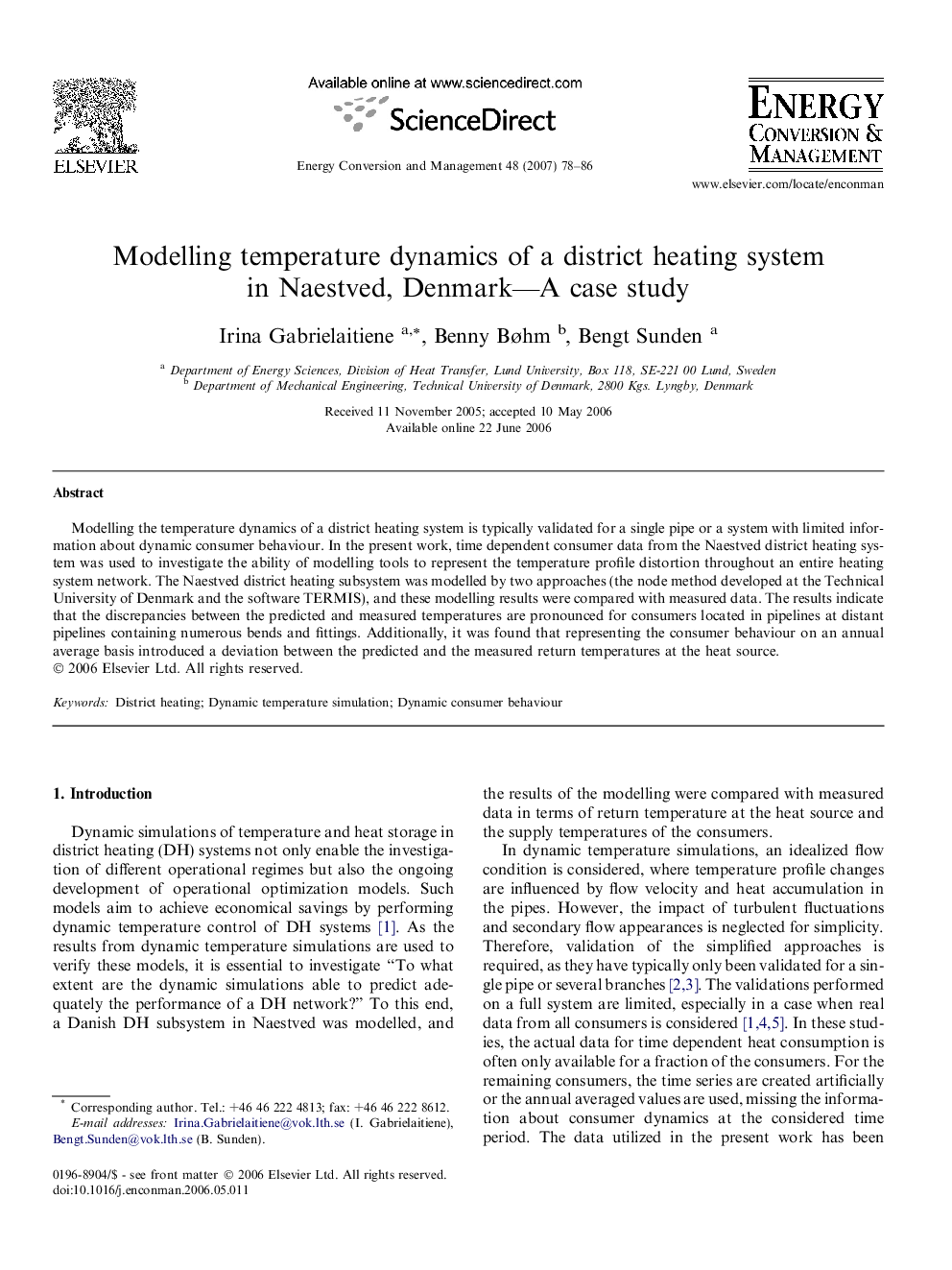| Article ID | Journal | Published Year | Pages | File Type |
|---|---|---|---|---|
| 765525 | Energy Conversion and Management | 2007 | 9 Pages |
Modelling the temperature dynamics of a district heating system is typically validated for a single pipe or a system with limited information about dynamic consumer behaviour. In the present work, time dependent consumer data from the Naestved district heating system was used to investigate the ability of modelling tools to represent the temperature profile distortion throughout an entire heating system network. The Naestved district heating subsystem was modelled by two approaches (the node method developed at the Technical University of Denmark and the software TERMIS), and these modelling results were compared with measured data. The results indicate that the discrepancies between the predicted and measured temperatures are pronounced for consumers located in pipelines at distant pipelines containing numerous bends and fittings. Additionally, it was found that representing the consumer behaviour on an annual average basis introduced a deviation between the predicted and the measured return temperatures at the heat source.
